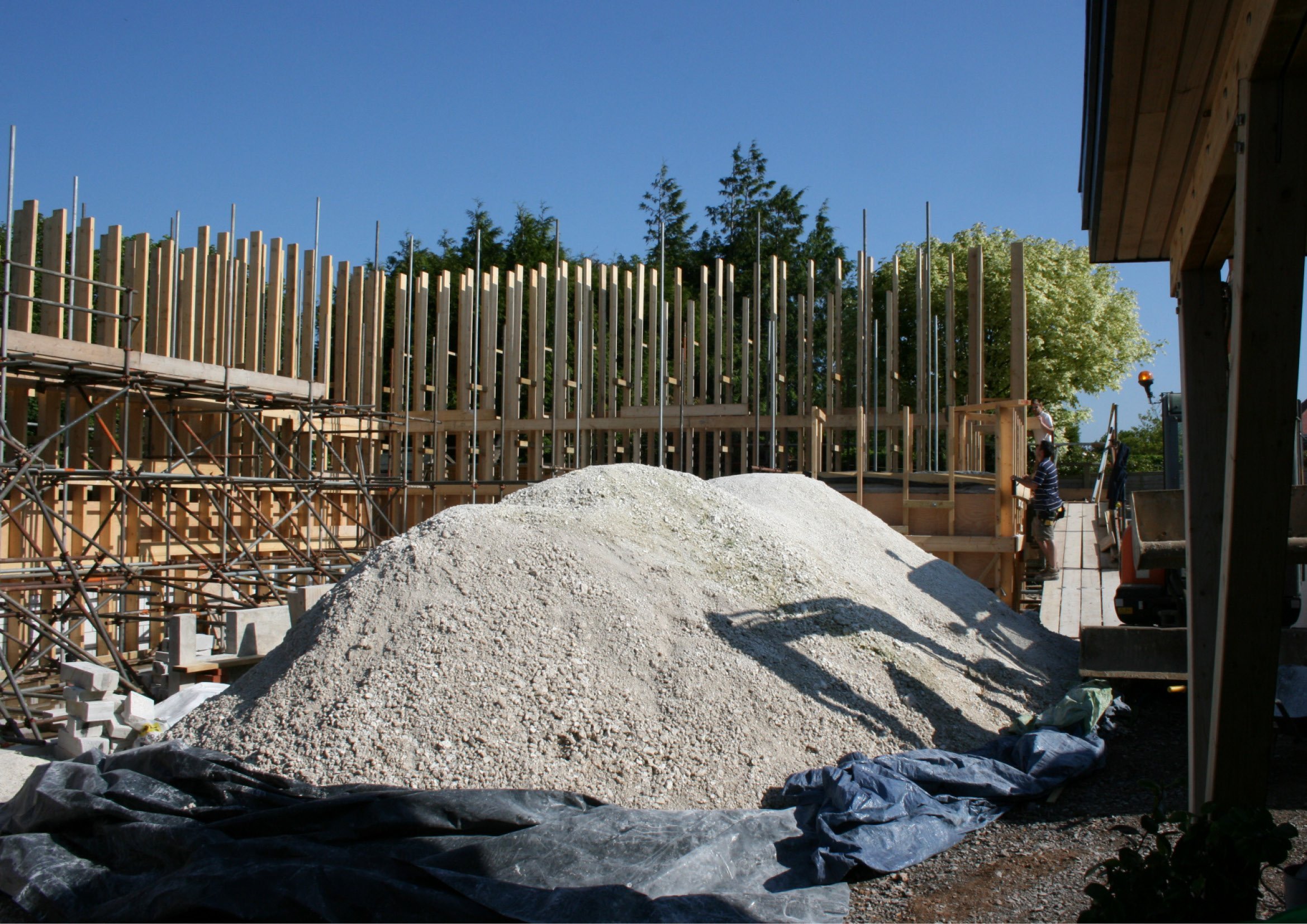Connecting to the ground we build on
Chalk House project in Dorset
Excavated chalk from the site for Chalk House project
by Adam Grover
When out and about, walking around Bristol I see many buildings that could be anywhere; they often don’t feel particular to our city. There's no clue to be had from the materials used that tells us where the building is located.
One of the wonderful things about traditional buildings in the UK is being able to know where you are simply by the building materials. Flint and thatched cottages in Suffolk, or grit stone buildings of the Peak district. This can also be achieved in an even more local way by using material from the very site the project is found on! Such as our project ‘Chalk House’ is made from rammed chalk, or (as mentioned in our blog last week) homemade house making bricks from the clay excavated from the site.
Local materials can also be used in non-traditional ways. In the past 6 months as a practice we’ve heard a series of talks from a range of people, with the aim of looking to learn how we can use more local, less carbon intensive materials, processes and transport to design and build with. All with the aim of creating homes that feel more connected to the earth they're situated on, striving to lessen the impact on the earth through lower carbon emissions and pollution.
Some have included:
Hearing from Scott Boote about the use of stone as an alternative to concrete foundations.
Connie Beauchamp and her research and experimentation of using mixed english hardwood in CLT production. Cutting carbon in transport and helping grow and manage our native woodlands to reduce monoculture and increase the health of the landscape.
Vastern timber who take local english timber usually not used in cladding and heat treat them to create timber that can last longer and perform better without the use of chemical treatments. They source, process and sell their products in the UK reducing carbon emission by thinking local. All the while using solar source electricity to power the heat treatment process.
On this year's Earth Day on the 22nd April, looking around you can see that our society is more global than ever - but maybe our buildings need to be more local than ever. To stand up for the world we live in, we need to build from and around the ground we stand on.


